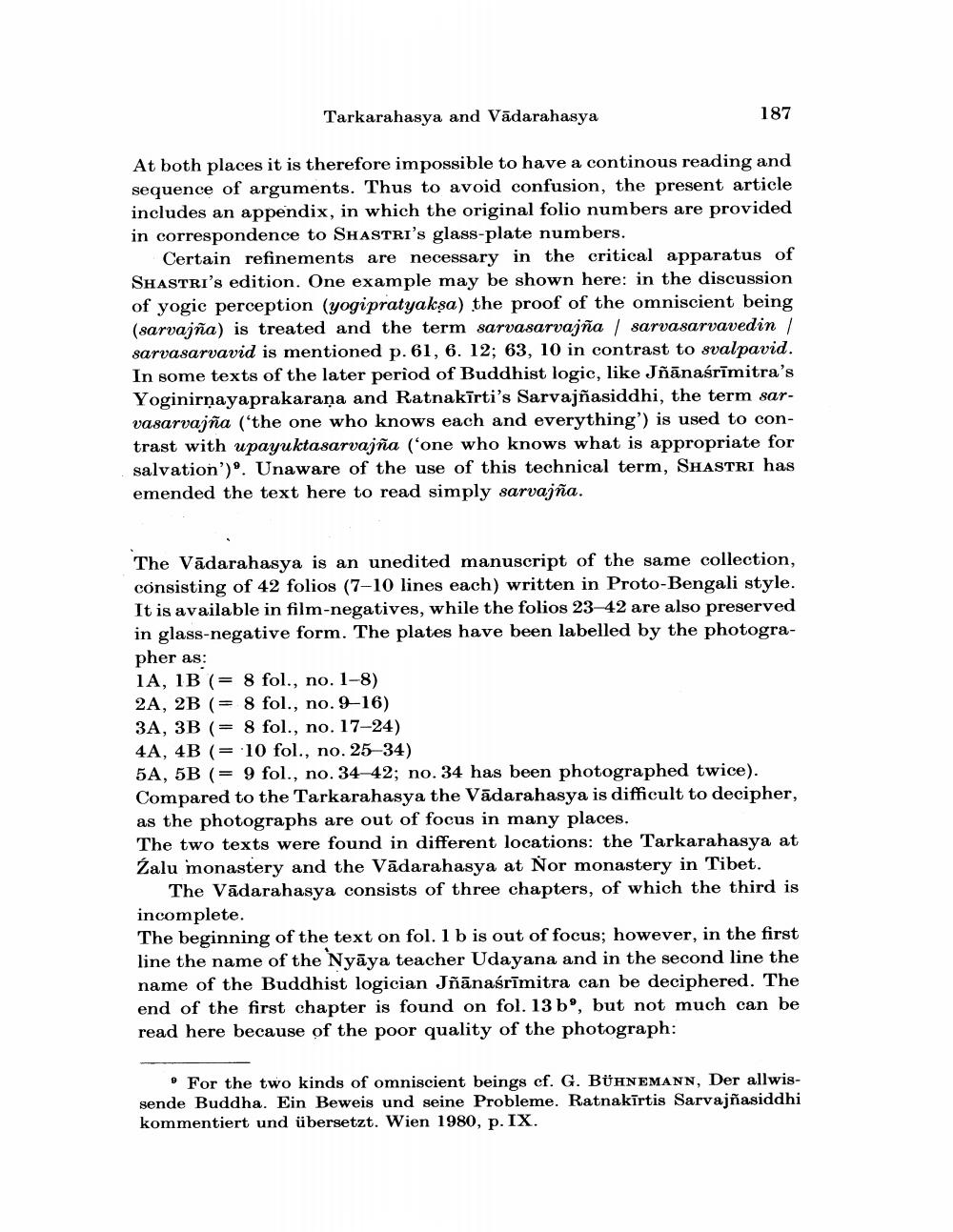Book Title: Tarkarahasya And Vadarahasya Author(s): Gurdrun Buhnemann Publisher: Gurdrun Buhnemann View full book textPage 3
________________ Tarkarahasya and Vādarahasya 187 At both places it is therefore impossible to have a continous reading and sequence of arguments. Thus to avoid confusion, the present article includes an appendix, in which the original folio numbers are provided in correspondence to SHASTRI's glass-plate numbers. Certain refinements are necessary in the critical apparatus of SHASTRI's edition. One example may be shown here: in the discussion of yogic perception (yogipratyaksa) the proof of the omniscient being (sarvajña) is treated and the term sarvasarvajña / sarvasarvavedin / sarvasarvavid is mentioned p. 61, 6. 12; 63, 10 in contrast to svalpavid. In some texts of the later period of Buddhist logic, like Jñānaśrīmitra's Yoginirņayaprakarana and Ratnakīrti's Sarvajñasiddhi, the term sarvasarvajña ('the one who knows each and everything') is used to contrast with upayuktasarvajña ('one who knows what is appropriate for salvation')'. Unaware of the use of this technical term, SHASTRI has emended the text here to read simply sarvajña. The Vādarahasya is an unedited manuscript of the same collection, consisting of 42 folios (7-10 lines each) written in Proto-Bengali style. It is available in film-negatives, while the folios 23-42 are also preserved in glass-negative form. The plates have been labelled by the photographer as: IA, IB (= 8 fol., no. 1-8) 2A, 2B (= 8 fol., no. 9-16) 3A, 3B (= 8 fol., no. 17-24) 4A, 4B (= 10 fol., no. 25–34) 5A, 5B (= 9 fol., no. 34–42; no. 34 has been photographed twice). Compared to the Tarkarahasya the Vādarahasya is difficult to decipher, as the photographs are out of focus in many places. The two texts were found in different locations: the Tarkarahasya at Žalu monastery and the Vādarahasya at Nor monastery in Tibet. The Vādarahasya consists of three chapters, of which the third is incomplete. The beginning of the text on fol. 1 b is out of focus; however, in the first line the name of the Nyāya teacher Udayana and in the second line the name of the Buddhist logician Jñānaśrīmitra can be deciphered. The end of the first chapter is found on fol. 13 b', but not much can be read here because of the poor quality of the photograph: . For the two kinds of omniscient beings cf. G. BÜHNEMANN, Der allwissende Buddha. Ein Beweis und seine Probleme. Ratnakirtis Sarvajñasiddhi kommentiert und übersetzt. Wien 1980, p. IX.Page Navigation
1 2 3 4 5 6
